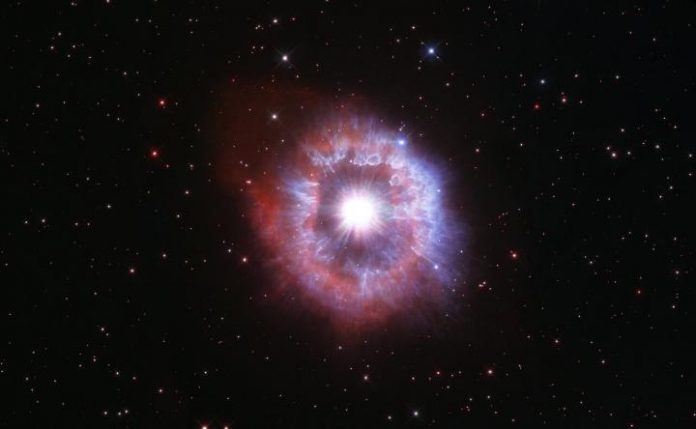
The star, AG Carinae, is fighting with gravity and radiation on the edge of death – Hubble also captures the five light-years wide nebula that comes with it
The structure is relatively young, created only several thousand years ago when there were one or more giant eruptions. These outbursts are usual in the life of a rare breed of star called a Luminous Blue Variable (LBV), which is a brief unstable phase in the short life of an ultra-bright, glamorous star that lives fast and dies young.
These stars are among the most massive and brightest stars known. They live for only a few million years, compared to the roughly 10-billion-year lifetime of our own Sun.
The actual universe itself is estimated to be 14 billion years old.
The star, AG Carinae is a few million years old. It is relatively close to the sun, living only 20,000 light-years away inside our Milky Way galaxy. It should live for 5 to 6 million years.
What are Luminous Blue Variables?
LBVs have a dual personality. They appear to spend years in semi-quiescent bliss and then they erupt in a petulant outburst, during which their luminosity increases – sometimes by several orders of magnitude. These behemoths are stars in the extreme, far different from normal stars like our Sun.
The star AG Carinae is actually estimated to be up to 70 times more massive than our Sun – it shines with the blinding brilliance of 1 million suns.
How common are LBVs?
LBV stars are rare – right now, fewer than 50 are known among the galaxies in our local group of neighbouring galaxies. These stars spend tens of thousands of years in this phase, a blink of an eye in cosmic time. Some are expected to end their lives in titanic supernova blasts, which enrich the Universe with the heavier elements beyond iron.
Like many other LBVs, this one remains unstable. It has experienced lesser outbursts that have not been as powerful as the one that created the present nebula.










